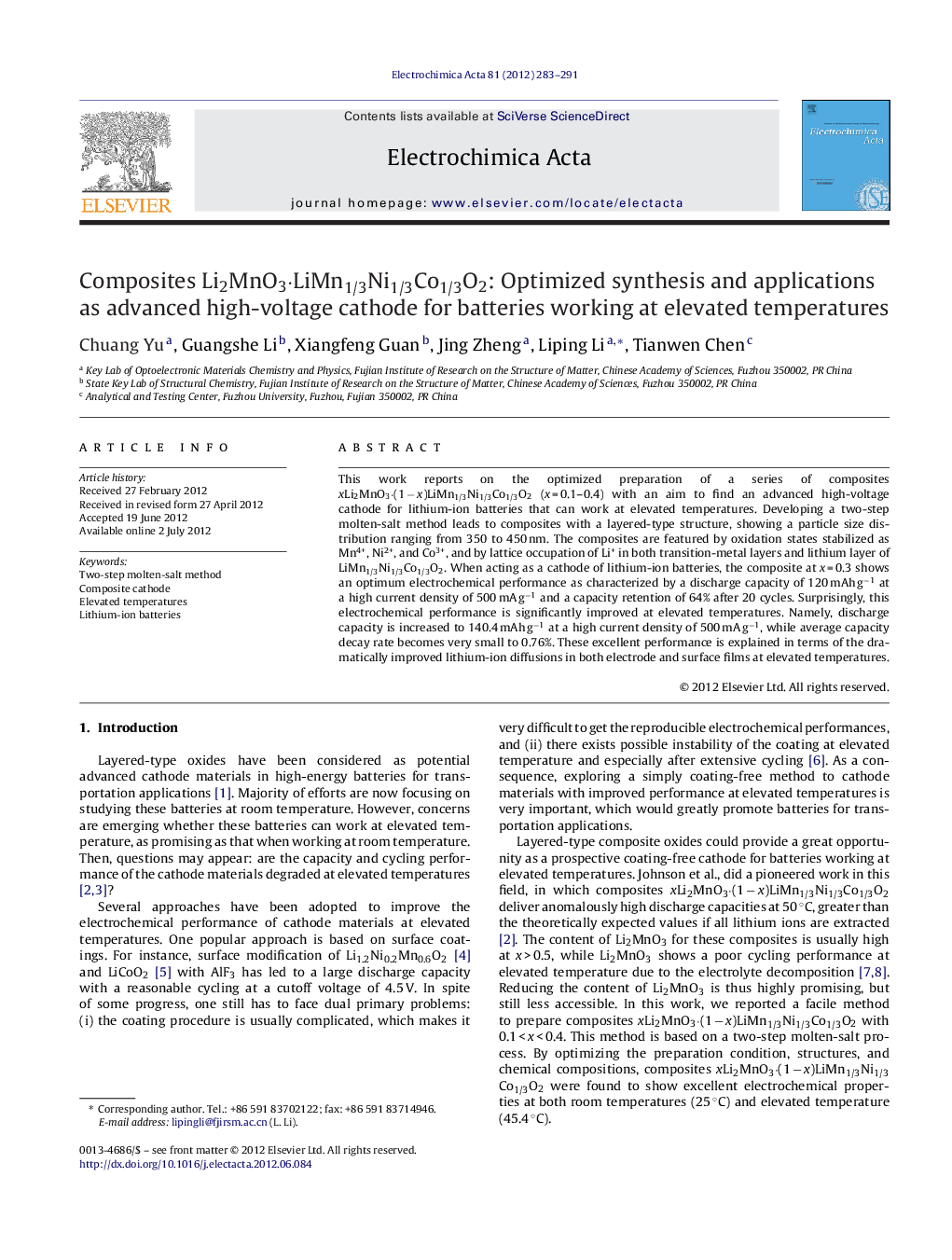| Article ID | Journal | Published Year | Pages | File Type |
|---|---|---|---|---|
| 188167 | Electrochimica Acta | 2012 | 9 Pages |
This work reports on the optimized preparation of a series of composites xLi2MnO3·(1 − x)LiMn1/3Ni1/3Co1/3O2 (x = 0.1–0.4) with an aim to find an advanced high-voltage cathode for lithium-ion batteries that can work at elevated temperatures. Developing a two-step molten-salt method leads to composites with a layered-type structure, showing a particle size distribution ranging from 350 to 450 nm. The composites are featured by oxidation states stabilized as Mn4+, Ni2+, and Co3+, and by lattice occupation of Li+ in both transition-metal layers and lithium layer of LiMn1/3Ni1/3Co1/3O2. When acting as a cathode of lithium-ion batteries, the composite at x = 0.3 shows an optimum electrochemical performance as characterized by a discharge capacity of 120 mAh g−1 at a high current density of 500 mA g−1 and a capacity retention of 64% after 20 cycles. Surprisingly, this electrochemical performance is significantly improved at elevated temperatures. Namely, discharge capacity is increased to 140.4 mAh g−1 at a high current density of 500 mA g−1, while average capacity decay rate becomes very small to 0.76%. These excellent performance is explained in terms of the dramatically improved lithium-ion diffusions in both electrode and surface films at elevated temperatures.
► Composites xLi2MnO3·(1 − x)LiMn1/3Ni1/3Co1/3O2 (x = 0.1–0.4) were prepared by a novel two-step molten-salt route. ► Structure and chemical compositions of the composites were optimized to show an optimum electrochemical property. ► Composite electrode 0.3Li2MnO3·0.7LiMn1/3Ni1/3Co1/3O2 exhibited an excellent electrochemical performance at elevated temperature of 45.4 °C. ► Electrode kinetics of composites was uncovered for the excellent electrochemical performance at elevated temperature.
